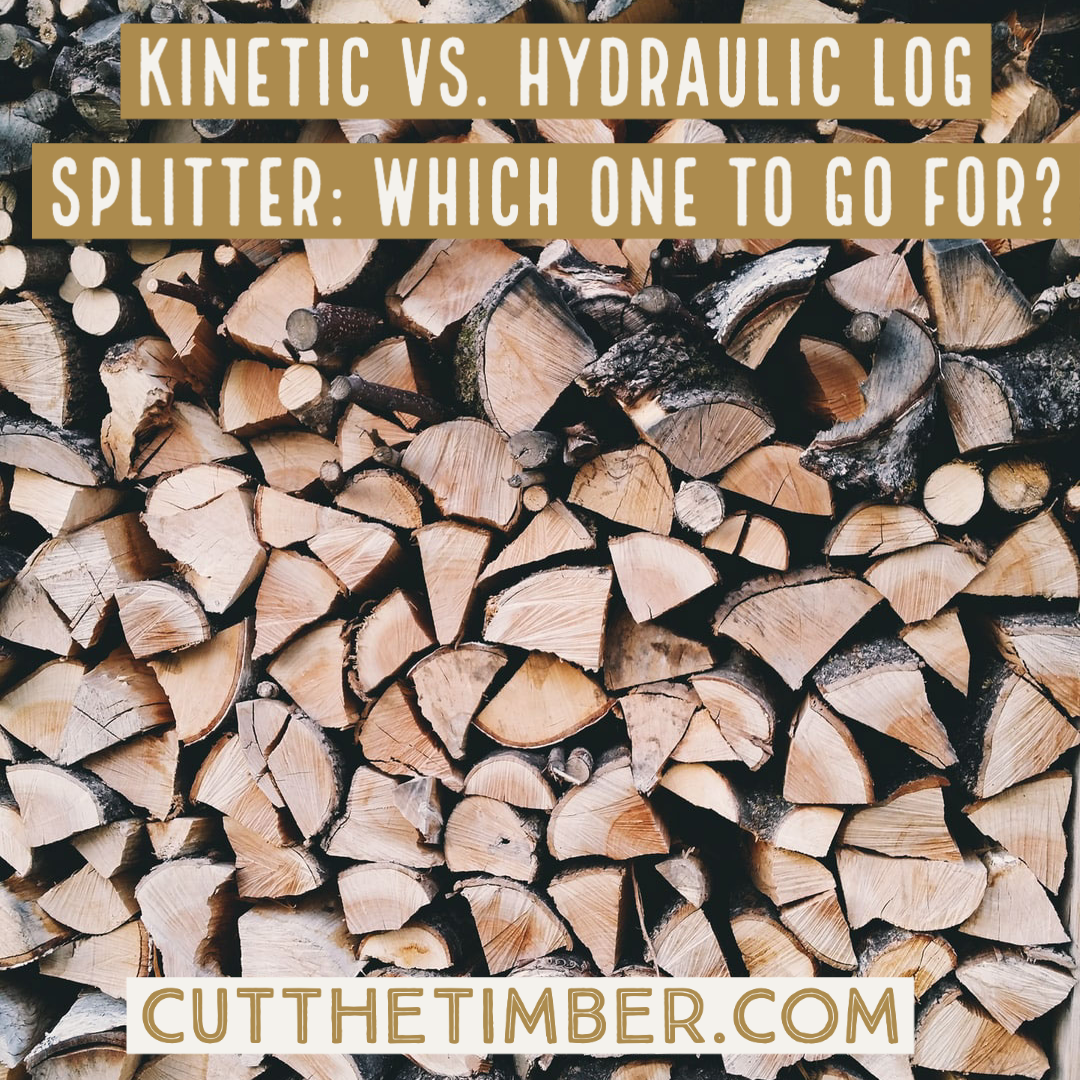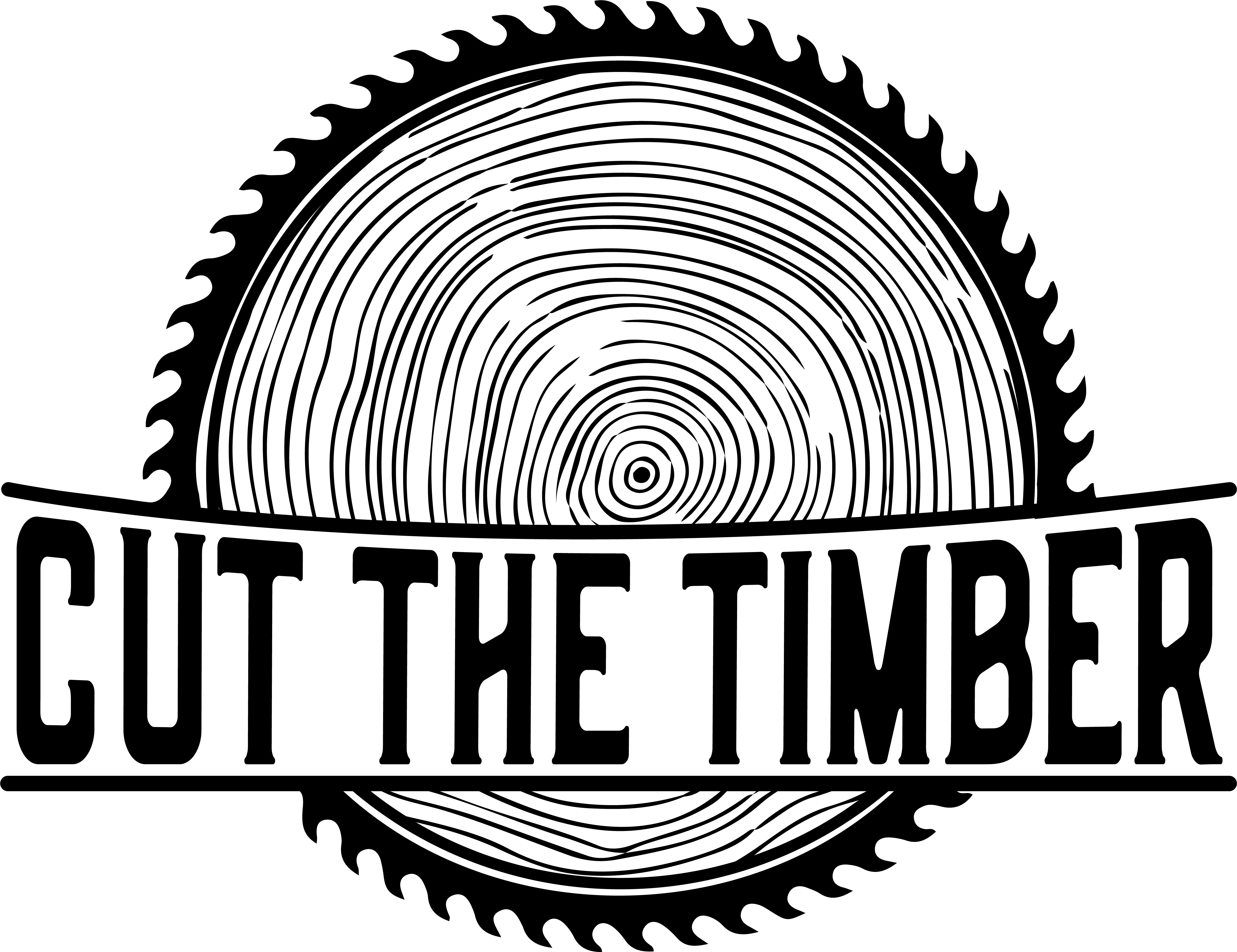Whether they’re electric or gas-powered, most log splitters use one of two mechanisms to get the job done. These mechanisms are kinetic and hydraulic systems. But, which one is better for you?
In the following article, I’ll walk you through a detailed comparison that puts kinetic vs hydraulic log splitters head to head. This way, you’ll be able to choose the one that suits you the most!

What is a Kinetic Log Splitter?
A kinetic log splitter isn’t a type in itself. Instead, it’s one of the mechanisms that push the wood logs into wedges to split them.
Kinetic log splitters aren’t as common as other types like hydraulic ones. They’re quick and powerful, so they can be used with different ages of wood as well as thicknesses.
That’s why they’re rising back to the top, as getting the job done faster becomes a necessity with the advancement of technology.
How Does a Kinetic Log Splitter Work?
The working mechanism behind kinetic log splitters depends mainly on kinetic energy, hence the name.
Instead of hydraulics, these systems utilize stored kinetic energy that is produced from spinning fly discs in the form of rotational energy. The acceleration of the disc releases all the stored kinetic energy to push the wood logs into wedges.
Unlike hydraulic systems, the buildup of energy is all released at once, which allows it to power through different sizes of logs.
What Are the Advantages of Kinetic Log Splitter?
As you already know, kinetic log splitters are gaining a lot of attention recently due to their features. Let’s have a look at some of these features.
Fastest Cycle
The most obvious advantage of kinetic log splitter is the ultra-fast speed. Since this type of log splitters release all the energy at once, they usually have the shortest cycle time among all other types.
Easy to Assemble and Use
Another quality feature of kinetic log splitters is the ease of use. Since they don’t have a lot of complicated parts, you won’t have any hard time putting it together.
What Are the Drawbacks of Kinetic Log Splitter?
Here are some of the cons of kinetic log Splitters that you might come across.
Not As Powerful
Although they split the logs faster, the kinetic log splitter doesn't have as much power to go through denser woods as hydraulic ones do.
Usually Bulkier
For the kinetic system to work, it requires a larger surface area than hydraulic log splitter needs. That’s why kinetic log splitters are usually larger in size even if they have the same weight.
Best Kinetic Log Splitter Options on the Market
Now that you know everything about kinetic log splitter, it’s time to find out more about the options available on the market.
Here’s a list of some kinetic log splitter options that might pique your interest:
What Is a Hydraulic Log Splitter?
Kinetic log splitters are the most common types that you might come across on the market. For example, you might find a gas-powered hydraulic splitter or an electric-powered hydraulic splitter.
The reason that made them extremely popular is their efficiency. They’re powerful, fast, and get the job done every time.
Another reason that makes a lot of people go for them is that they have a lot of advantages and little drawbacks. But more on that later.
How Does a Hydraulic Log Splitter Work?
Before diving into the pros and cons of having a hydraulic log splitter, let’s have a quick look at how these machines work.
For any hydraulic machine to work, it usually requires some components. First, you need an engine. In a log splitter case, this one is either a 12 to 20 amp electric one or a four-stroke gasoline one.
Once you press the button on the splitter, the valve releases the log and shoots it towards a durable wedge to split the log in half.In both situations, the engine is attached to a pump that contains a fluid called “hydraulic oil”. This hydraulic oil pump creates a buildup of a high-pressure stream of oil that reaches the valve.
What Are the Advantages of Hydraulic Log Splitters?
Now that you know how hydraulic log splitters work, let’s have a closer look at some of the pros of having one.
More Powerful
One of the biggest advantages of hydraulic log splitters over kinetic ones is that they’re usually more powerful.
Hydraulic systems build up a strong stream of pressure that allows it to split large logs easier than the kinetic counterparts. Also, hydraulic log splitters struggle less against dense and knotty woods and do a better job with harder types of wood in general.
Variety of Types
While hydraulic systems are usually a part of an engine-driven log splitter, they can also work manually.
These ones produce a much higher drive force when compared to fully manual ones all the while staying far less labor-intensive.
Manual Hydraulic Ones Are the Easiest to Maintain
A gas-powered or electric log splitter will require some maintenance of their own. For example, you’ll need to check the engine and refuel the gas-powered ones. However, the hydraulic part usually requires minimal effort to maintain.
Ideally, you’ll only need to check on the hydraulic fluids and lubricate the moving parts to get the device up and running properly.
What Are the Drawbacks of Hydraulic Log Splitters?
While they’re few, hydraulic log splitters still have some cons that you should know about.
Requires Some Bending As They Have a Low Profile
Usually, most hydraulic systems are designed to work horizontally. This makes them relatively low profile when compared to other types.
As a result, the operator will need to bend over quite frequently to get the job done, which can put some strain on your back.
A Bit Slower Per Cycle
The other point that hydraulic log splitters are lacking at is the speed of the cycle. As you already know, Kinetic log splitters usually have the fastest and shortest cycle time among all types of log splitters.
Best Hydraulic Log Splitter Options on the Market
As you already know, hydraulic log splitters are available in two types. The more common type is the ones attached to either electric or gas-powered engines.
These ones use the engine powers to build up the pressure automatically within the hydraulic chambers. Here are some of the log splitters that use hydraulic systems:
- Boss Industrial ES7T20 Electric Log Splitter with a Hydraulic RAM
- Southland Power Equipment SELS60 6 Ton Electric Log Splitter with Hydraulic System
- YARDMAX YS0552 5 Ton Electric Log Splitter with Hydraulic System
- Champion 25-Ton Full Beam Gas Log Splitter with Hydraulic Oil System
- NorthStar 37-Ton Log Splitter, 270 cc Honda GX270 Engine with Hydraulic Pump
In addition to engine driven systems, there are also manual hydraulic splitters, such as the Sun Joe LJ10M 10-Ton Hydraulic Log Splitter.
Wrap Up
There you have it, a complete comparison that puts kinetic vs hydraulic log splitters head to head, so you can choose the one that suits you the most.
These models provide a lot of value for a much more reasonable price when compared to either gas or electric ones.
If you’re looking for speed above all, then you should go with a kinetic log splitter. However, if you’re aiming for a convenient log splitter that’s able to power through different types of wood, a hydraulic one is your best bet.





